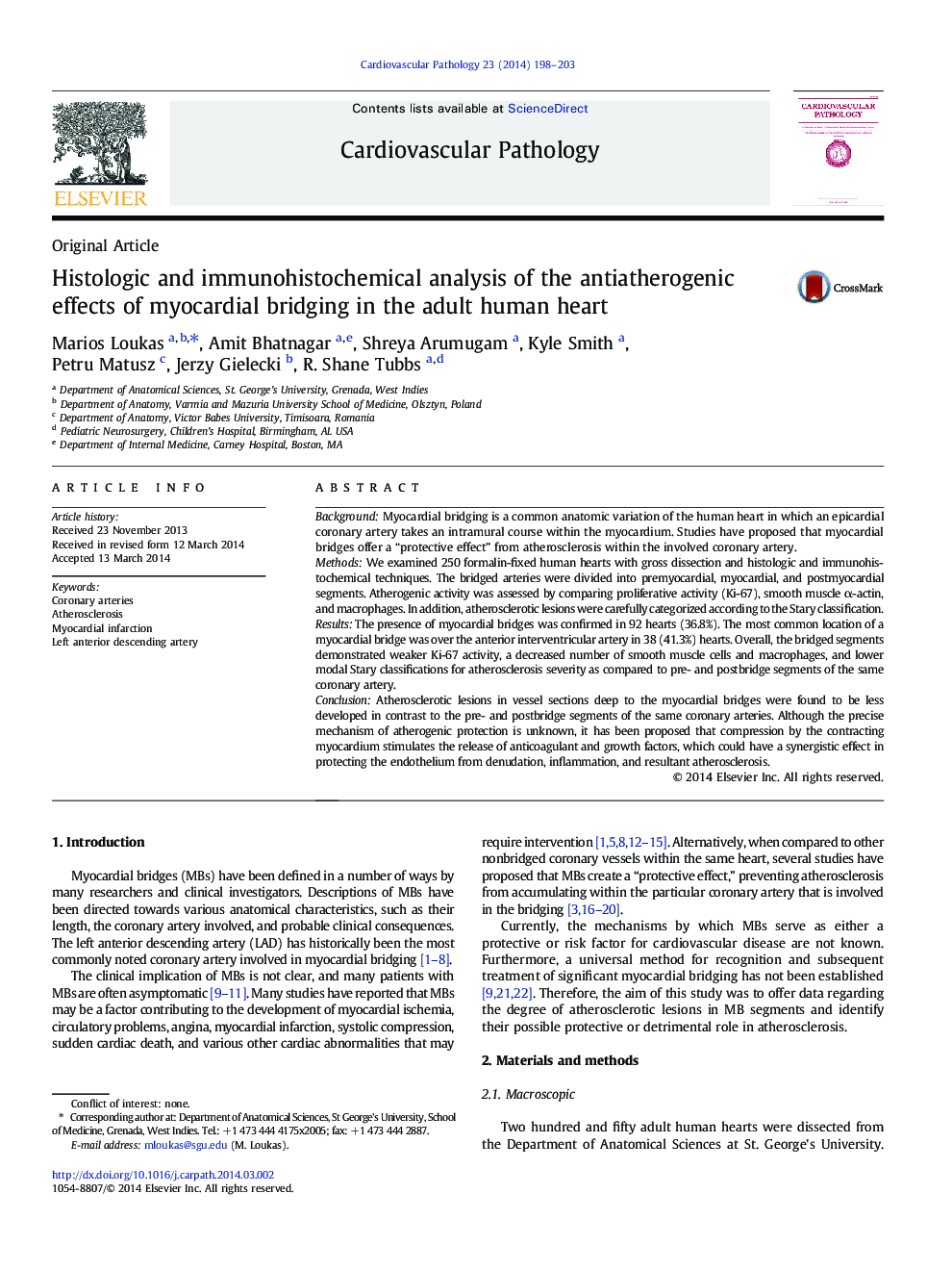| کد مقاله | کد نشریه | سال انتشار | مقاله انگلیسی | نسخه تمام متن |
|---|---|---|---|---|
| 5951911 | 1173090 | 2014 | 6 صفحه PDF | دانلود رایگان |

BackgroundMyocardial bridging is a common anatomic variation of the human heart in which an epicardial coronary artery takes an intramural course within the myocardium. Studies have proposed that myocardial bridges offer a “protective effect” from atherosclerosis within the involved coronary artery.MethodsWe examined 250 formalin-fixed human hearts with gross dissection and histologic and immunohistochemical techniques. The bridged arteries were divided into premyocardial, myocardial, and postmyocardial segments. Atherogenic activity was assessed by comparing proliferative activity (Ki-67), smooth muscle α-actin, and macrophages. In addition, atherosclerotic lesions were carefully categorized according to the Stary classification.ResultsThe presence of myocardial bridges was confirmed in 92 hearts (36.8%). The most common location of a myocardial bridge was over the anterior interventricular artery in 38 (41.3%) hearts. Overall, the bridged segments demonstrated weaker Ki-67 activity, a decreased number of smooth muscle cells and macrophages, and lower modal Stary classifications for atherosclerosis severity as compared to pre- and postbridge segments of the same coronary artery.ConclusionAtherosclerotic lesions in vessel sections deep to the myocardial bridges were found to be less developed in contrast to the pre- and postbridge segments of the same coronary arteries. Although the precise mechanism of atherogenic protection is unknown, it has been proposed that compression by the contracting myocardium stimulates the release of anticoagulant and growth factors, which could have a synergistic effect in protecting the endothelium from denudation, inflammation, and resultant atherosclerosis.
Journal: Cardiovascular Pathology - Volume 23, Issue 4, JulyâAugust 2014, Pages 198-203